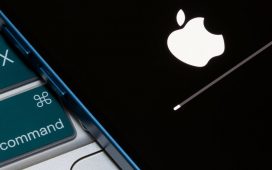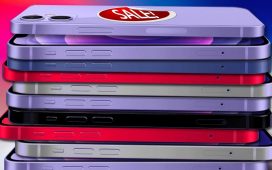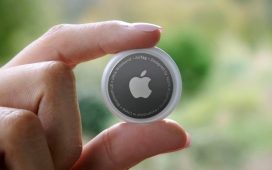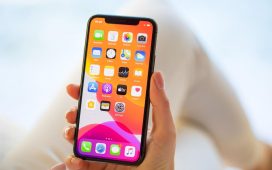While some insiders are predicting the entire iPhone 14 range will have the same A15 Bionic processor as the iPhone 13, others expect Apple to introduce a new processor, the A16 Bionic, but only for the iPhone 14 Pro and Pro Max phones, to help justify the $500 or more extra that Apple charges for Pro models.
It is even expected that the biggest cosmetic change, the removal of the notch, will only apply to Pro models, leaving the regular iPhone 14 almost indistinguishable from the iPhone 13, apart from new colours that Apple is expected to introduce. There is also a possibility of a larger camera bump at the back, to accommodate more powerful cameras.

Apple CEO Tim Cook announced the iPhone 13, notch and all, last September. It could be the big winner from the iPhone 14 launch this September.
Whichever phones have their notch removed, the latest rumours suggest the notch will be replaced by two, small cutouts in the screen – a round one for the camera, and a larger one for the Face ID biometric scanner – but that Apple has decided to turn off all the pixels in the screen between the two cutouts, to make it appear as a single, long cutout that’s less distracting than two smaller ones.
But, regardless of the mix of iPhone 13 and iPhone 14 sales in coming months, Apple should still do well out of the launch, Mr Fadaghi said.
According to Telsyte’s Australian Smartphone & Wearable Devices Market Study 2022-26, Australian sales of the iPhone were down by 2 per cent in the first half of this year, compared to the same half last year. Over the same period, sales of Android phones were up by 5 per cent.
But that small decline in iPhone sales was influenced by one-off factors, such as Apple extending the life of older models and users having previously brought forward the phone upgrades in the early days of the COVID-19 pandemic, and Australian sales should rebound in this half, Mr Fadaghi said.
Including Android and iPhone sales, Australians are expected to buy 4.6 million phones in the second half of 2022, an increase of 3 per cent over the same period last year, Telsyte found.
Looking ahead, though, Apple does need to come out with some sort of foldable iPhone, to counter the growing popularity of Samsung’s Galaxy Z Fold and Galaxy Z Flip phones.
Telsyte’s study found that 6 per cent of Android phones sold in the first half of 2022 were foldable – a trend that is only going to accelerate in the coming year, when roughly one in eight Android phones sold will be foldable.
“Apple needs to respond to the folding challenge in the next year or two,” Mr Fadaghi said. Folding phones are starting to become popular with social media influencers, who find that having a second screen on the phone allows them to take selfies with the phone’s rear camera, which takes better photos than the front camera.
“There are a few use cases for folding phones that present a challenge for Apple, and one of them is influencers. Apple needs to do something to shore up its popularity among influencers,” Mr Fadaghi said.








